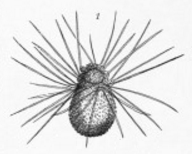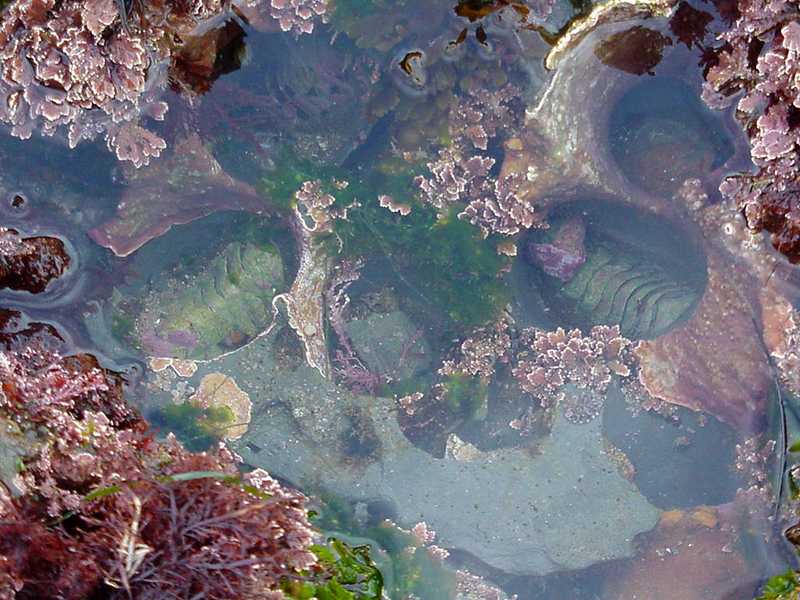|
Rhabdammina
''Rhabdammina'' is a genus in the family '' Rhabdamminidae'' of textulariid foraminifera Foraminifera ( ; Latin for "hole bearers"; informally called "forams") are unicellular organism, single-celled organisms, members of a phylum or class (biology), class of Rhizarian protists characterized by streaming granular Ectoplasm (cell bio .... ''Rhabdammina'' species are vagile, inbenthos foraminiferans, usually found in deep sea regions with normal salinity. References External links BioLib - RhabdamminaWoRMS taxon details: Rhabdammina Sars, 1869 Foraminifera genera Extant Oligocene first appearances Radiolarian genera {{foram-stub ... [...More Info...] [...Related Items...] OR: [Wikipedia] [Google] [Baidu] |
Oligocene
The Oligocene ( ) is a geologic epoch (geology), epoch of the Paleogene Geologic time scale, Period that extends from about 33.9 million to 23 million years before the present ( to ). As with other older geologic periods, the rock beds that define the epoch are well identified but the exact dates of the start and end of the epoch are slightly uncertain. The name Oligocene was coined in 1854 by the German paleontologist Heinrich Ernst Beyrich from his studies of marine beds in Belgium and Germany. The name comes from Ancient Greek (''olígos'') 'few' and (''kainós'') 'new', and refers to the sparsity of Neontology, extant forms of Mollusca, molluscs. The Oligocene is preceded by the Eocene Epoch and is followed by the Miocene Epoch. The Oligocene is the third and final epoch of the Paleogene Period. The Oligocene is often considered an important time of transition, a link between the archaic world of the tropical Eocene and the more modern ecosystems of the Miocene. Major chang ... [...More Info...] [...Related Items...] OR: [Wikipedia] [Google] [Baidu] |
Eukaryota
The eukaryotes ( ) constitute the Domain (biology), domain of Eukaryota or Eukarya, organisms whose Cell (biology), cells have a membrane-bound cell nucleus, nucleus. All animals, plants, Fungus, fungi, seaweeds, and many unicellular organisms are eukaryotes. They constitute a major group of Outline of life forms, life forms alongside the two groups of prokaryotes: the Bacteria and the Archaea. Eukaryotes represent a small minority of the number of organisms, but given their generally much larger size, their collective global biomass is much larger than that of prokaryotes. The eukaryotes emerged within the archaeal Kingdom (biology), kingdom Asgard (Archaea), Promethearchaeati and its sole phylum Promethearchaeota. This implies that there are only Two-domain system, two domains of life, Bacteria and Archaea, with eukaryotes incorporated among the Archaea. Eukaryotes first emerged during the Paleoproterozoic, likely as Flagellated cell, flagellated cells. The leading evolutiona ... [...More Info...] [...Related Items...] OR: [Wikipedia] [Google] [Baidu] |
SAR Supergroup
SAR is a highly diverse clade of eukaryotes, often considered a supergroup, that includes stramenopiles (heterokonts), alveolates, and rhizarians. It is a node-based taxon (under the Sar name), including all descendants of the three groups' last common ancestor, and comprises most of the now-rejected Chromalveolata. Their sister group has been found to be telonemids, with which they make up the TSAR clade. Harosa is sometimes used synonymously with TSAR. Etymology The name SAR is an acronym derived from the first letters of its three constituent clades; it has been alternatively spelled RAS. The term Harosa (at the subkingdom level) has also been used, with Stramenopiles replaced by its synonym Heterokonta in this variant of the acronym. History of discovery Before the discovery of the SAR supergroup, stramenopiles and alveolates were classified in the supergroup Chromalveolata alongside haptophytes and cryptomonads, being believed to have acquired plastids th ... [...More Info...] [...Related Items...] OR: [Wikipedia] [Google] [Baidu] |
Rhizaria
The Rhizaria are a diverse and species-rich clade of mostly unicellular eukaryotes. Except for the Chlorarachniophytes and three species in the genus '' Paulinella'' in the phylum Cercozoa, they are all non-photosynthetic, but many Foraminifera and Radiolaria have a symbiotic relationship with unicellular algae. A multicellular form, ''Guttulinopsis vulgaris'', a cellular slime mold, has been described. This group was used by Cavalier-Smith in 2002, although the term "Rhizaria" had been long used for clades within the currently recognized taxon. Being described mainly from rDNA sequences, they vary considerably in form, having no clear morphological distinctive characters ( synapomorphies), but for the most part they are amoeboids with filose, reticulose, or microtubule-supported pseudopods. In the absence of an apomorphy, the group is ill-defined, and its composition has been very fluid. Some Rhizaria possess mineral exoskeletons ( thecae or loricas), which are in diffe ... [...More Info...] [...Related Items...] OR: [Wikipedia] [Google] [Baidu] |
Retaria
Retaria is a clade within the supergroup Rhizaria containing the Foraminifera and the Radiolaria. In 2019, the Retaria were recognized as a basal Rhizaria group, as sister of the Cercozoa Cercozoa (now synonymised with Filosa) is a phylum of diverse single-celled eukaryotes. They lack shared morphological characteristics at the microscopic level, and are instead united by phylogeny, molecular phylogenies of rRNA and actin or Ubiqu .... References External links Taxa named by Thomas Cavalier-Smith Rhizaria phyla Rhizaria taxa {{Retaria-stub ... [...More Info...] [...Related Items...] OR: [Wikipedia] [Google] [Baidu] |
Foraminifera
Foraminifera ( ; Latin for "hole bearers"; informally called "forams") are unicellular organism, single-celled organisms, members of a phylum or class (biology), class of Rhizarian protists characterized by streaming granular Ectoplasm (cell biology), ectoplasm for catching food and other uses; and commonly an external shell (called a "Test (biology), test") of diverse forms and materials. Tests of chitin (found in some simple genera, and ''Textularia'' in particular) are believed to be the most primitive type. Most foraminifera are marine, the majority of which live on or within the seafloor sediment (i.e., are benthos, benthic, with different sized species playing a role within the macrobenthos, meiobenthos, and Benthos, microbenthos), while a smaller number float in the water column at various depths (i.e., are planktonic), which belong to the suborder Globigerinina. Fewer are known from freshwater or brackish conditions, and some very few (nonaquatic) soil species have been id ... [...More Info...] [...Related Items...] OR: [Wikipedia] [Google] [Baidu] |
Textulariida
The Textulariida are an order of foraminifera that produce agglutinated shells or tests. An agglutinated test is one made of foreign particles glued together with an organic or calcareous cement to form an external shell on the outside of the organism. Commonly, the order had been made up of all species of Foraminifera with these types of shells, but genetic studies indicate these organisms do not form an evolutionary group, and several superfamilies in the order have been moved to the order Allogromiida. The remaining forms are sometimes divided into three orders: the Trochamminida and Lituolida, which have organic cement, and the Textulariida ''sensu stricto'', which use a calcareous cement. All three orders or superfamilies are known as fossils from the Cambrian The Cambrian ( ) is the first geological period of the Paleozoic Era, and the Phanerozoic Eon. The Cambrian lasted 51.95 million years from the end of the preceding Ediacaran period 538.8 Ma (million ye ... [...More Info...] [...Related Items...] OR: [Wikipedia] [Google] [Baidu] |
Ammodiscacea
The Ammodiscacea is a superfamily of foraminifera Foraminifera ( ; Latin for "hole bearers"; informally called "forams") are unicellular organism, single-celled organisms, members of a phylum or class (biology), class of Rhizarian protists characterized by streaming granular Ectoplasm (cell bio ... in the order Textulariida. tests (or shells) are made of agglutinated grains and consist of a proloculus (the initial chamber) followed by an enrolled tubular second chamber open at the distal end, that lacks internal septa but which may have growth constrictions. Ammodiscacea includes a single family, the Ammodiscidae, which contains five subfamilies: : Ammodiscinae : Ammovertellininae : Ammovolummininae : Tolypammininae : Usbekistaniinae References * Alfred R. Loeblich Jr and Helen Tappan, 1964. Sarcodina Chiefly "Thecamoebians" and Foraminiferida; Treatise on Invertebrate Paleontology, Part C Protista 2. Geological Society of America and University of Kansas Press. * Alfred ... [...More Info...] [...Related Items...] OR: [Wikipedia] [Google] [Baidu] |
Foraminifera
Foraminifera ( ; Latin for "hole bearers"; informally called "forams") are unicellular organism, single-celled organisms, members of a phylum or class (biology), class of Rhizarian protists characterized by streaming granular Ectoplasm (cell biology), ectoplasm for catching food and other uses; and commonly an external shell (called a "Test (biology), test") of diverse forms and materials. Tests of chitin (found in some simple genera, and ''Textularia'' in particular) are believed to be the most primitive type. Most foraminifera are marine, the majority of which live on or within the seafloor sediment (i.e., are benthos, benthic, with different sized species playing a role within the macrobenthos, meiobenthos, and Benthos, microbenthos), while a smaller number float in the water column at various depths (i.e., are planktonic), which belong to the suborder Globigerinina. Fewer are known from freshwater or brackish conditions, and some very few (nonaquatic) soil species have been id ... [...More Info...] [...Related Items...] OR: [Wikipedia] [Google] [Baidu] |
Benthos
Benthos (), also known as benthon, is the community of organisms that live on, in, or near the bottom of a sea, river, lake, or stream, also known as the benthic zone.Benthos from the Census of Antarctic Marine Life website This community lives in or near marine or freshwater sedimentary environments, from tidal pools along the , out to the continental shelf, and then down to the [...More Info...] [...Related Items...] OR: [Wikipedia] [Google] [Baidu] |
Foraminifera Genera
Foraminifera ( ; Latin for "hole bearers"; informally called "forams") are single-celled organisms, members of a phylum or class of Rhizarian protists characterized by streaming granular ectoplasm for catching food and other uses; and commonly an external shell (called a " test") of diverse forms and materials. Tests of chitin (found in some simple genera, and '' Textularia'' in particular) are believed to be the most primitive type. Most foraminifera are marine, the majority of which live on or within the seafloor sediment (i.e., are benthic, with different sized species playing a role within the macrobenthos, meiobenthos, and microbenthos), while a smaller number float in the water column at various depths (i.e., are planktonic), which belong to the suborder Globigerinina. Fewer are known from freshwater or brackish conditions, and some very few (nonaquatic) soil species have been identified through molecular analysis of small subunit ribosomal DNA. Foraminifera typicall ... [...More Info...] [...Related Items...] OR: [Wikipedia] [Google] [Baidu] |






